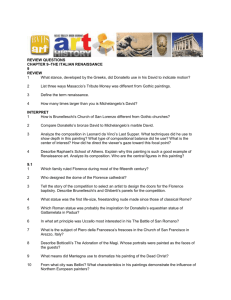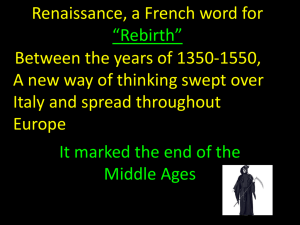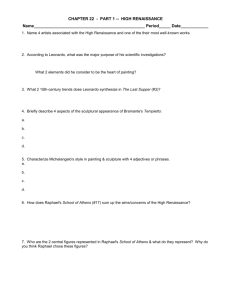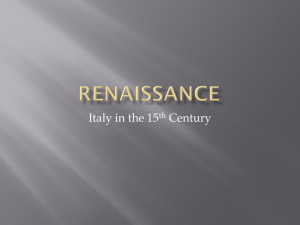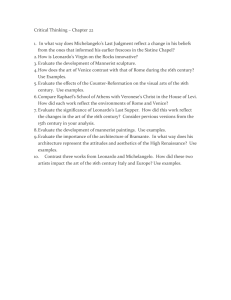Chapter 1 - handteq studios
advertisement
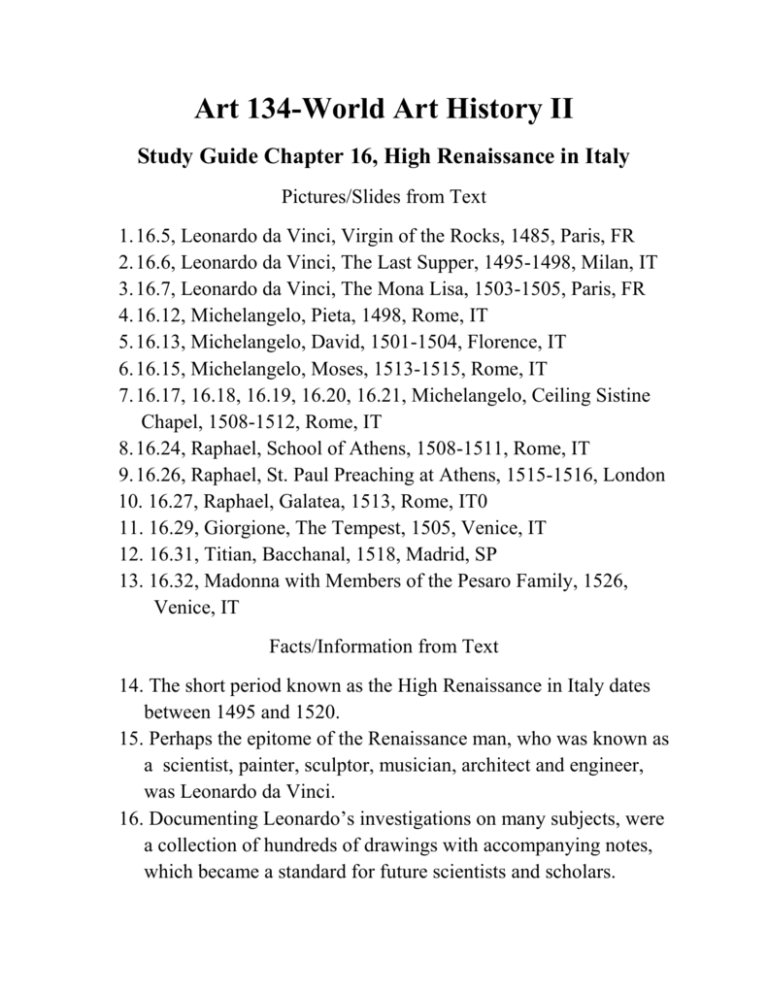
Art 134-World Art History II Study Guide Chapter 16, High Renaissance in Italy Pictures/Slides from Text 1. 16.5, Leonardo da Vinci, Virgin of the Rocks, 1485, Paris, FR 2. 16.6, Leonardo da Vinci, The Last Supper, 1495-1498, Milan, IT 3. 16.7, Leonardo da Vinci, The Mona Lisa, 1503-1505, Paris, FR 4. 16.12, Michelangelo, Pieta, 1498, Rome, IT 5. 16.13, Michelangelo, David, 1501-1504, Florence, IT 6. 16.15, Michelangelo, Moses, 1513-1515, Rome, IT 7. 16.17, 16.18, 16.19, 16.20, 16.21, Michelangelo, Ceiling Sistine Chapel, 1508-1512, Rome, IT 8. 16.24, Raphael, School of Athens, 1508-1511, Rome, IT 9. 16.26, Raphael, St. Paul Preaching at Athens, 1515-1516, London 10. 16.27, Raphael, Galatea, 1513, Rome, IT0 11. 16.29, Giorgione, The Tempest, 1505, Venice, IT 12. 16.31, Titian, Bacchanal, 1518, Madrid, SP 13. 16.32, Madonna with Members of the Pesaro Family, 1526, Venice, IT Facts/Information from Text 14. The short period known as the High Renaissance in Italy dates between 1495 and 1520. 15. Perhaps the epitome of the Renaissance man, who was known as a scientist, painter, sculptor, musician, architect and engineer, was Leonardo da Vinci. 16. Documenting Leonardo’s investigations on many subjects, were a collection of hundreds of drawings with accompanying notes, which became a standard for future scientists and scholars. 17. Leonardo’s painting, “The Last Supper” is said to be the most copied and reproduced painting in history. 18. Leonardo’s mysterious painting, “The Mona Lisa” is said to be the most viewed painting in history. 19.The most celebrated architect of the High Renaissance, represented in our text by “The Tempietto” was Donato Bramante. 20. One of Michelangelo’s most celebrated sculptures, “The Pieta” was completed at the young age of 24. 21. Michelangelo’s monumental, “Statue of David” carved from an 18 foot tall block of marble meets or perhaps surpasses the greatest works of sculpture of classical Greece. 22. In a tremendous feet of productivity, Michelangelo completed his frescos for the ceiling of the Sistine Chapel in a short span of four years from 1508-1512. 23. Another supreme example of High Renaissance fresco painting is the interior of Stanza della Segnatura by Raphael. 24. The High Renaissance painter known as Giorgione, specialized in smaller scale works with secular themes for the homes of wealthy patrons. 25. A student of Giorgione, and the most long lived of all High Renaissance painters, Titian’s career spanned over a half century, dying in 1576 at the age of 86-88.


